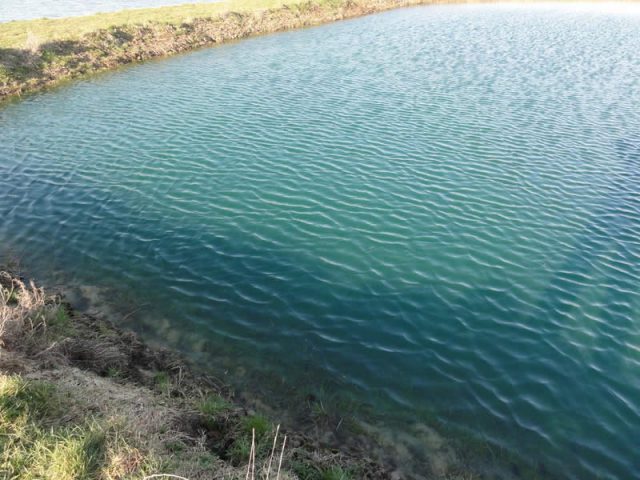Dyofix Lake Dye
At last a cost effective and environmentally friendly way to control aquatic weed and algae. Many still waters these days suffer from weed or algae problems, excess nutrients are utilised by plants and algae, these can cause major problems if allowed to get out of control. Many of the chemicals that have been used over the years have now been banned as they cause major problems within the aquatic environment.
We have used this dye based system for over ten years now, this dye reflects some of the light spectrum that plants need to photosynthesise thus starving the weeds and algae, the dye is food grade and is totally none toxic, it is best added in early spring to stop the weed or algae developing in the first place, there are two versions of the dye available one turns the water a very attractive blue colour, the other is called shadow and just darkens the water like it was constantly in a shadow.
The blue lake dye is the most cost effective to use, just 400 grams will treat 1 acre 1 metre deep, at 2 metres deep 800 grams would be needed, 1 kg will treat 1 acre 2.5 metres deep, or 2.5 acres 1 meter deep.
The shadow lake dye is not as concentrated as the blue but is preferred by some fishery owners as it looks more natural, 1 kg of the shadow will treat 1 acre 1 metre deep.
The above dose rates are the minimum doses, there is no maximum dose as they are completely non toxic, the more dye added to the lake the stronger the colour will be.
Both will need top up doses every few weeks or so as the dye slowly bio-degrades and to counteract dilution by rainfall or other through flows of water.





